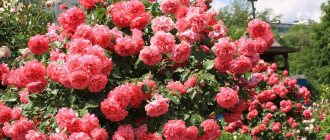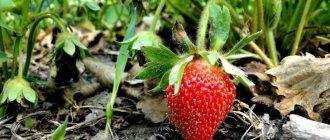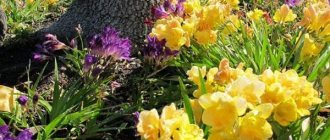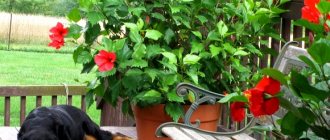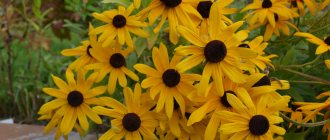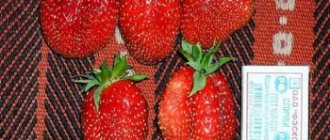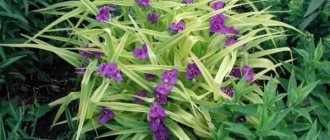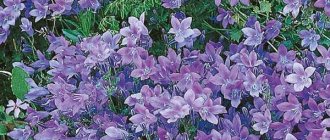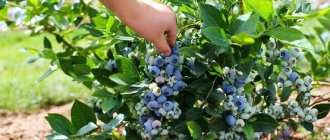Trapezoidal beds and their advantages
This method of planting strawberries is the most traditional for many gardeners. For several decades it has been used for industrial cultivation in fields, since labor and financial costs are minimal. In addition to the accessibility of the method, it has a large number of advantages, which we will now consider.
- Good air exchange. A trapezoidal ridge not only makes it easier to harvest, but also provides the roots with as much air as possible, which they vitally need for proper development. Planting simply in the ground or under film does not give the desired result, but a trapezoid is the ideal shape.
- Easy to create. It can be done manually at your dacha or using mechanized means. In Europe, special trailed equipment is used for tractors, which digs two parallel holes, and the top of the “edge” is smoothed. Thus, in just a few minutes the field is transformed into a high-quality planting area. Even some varieties of black currants and grapes are often planted on the ridges, because it is convenient, profitable, and fast.
- Low labor costs. People can walk along the slopes of the trapezoid or technological paths, while their hands can reach the middle of the ridge from any side. Planting rosettes is very convenient; it takes little time, since they can be placed anywhere in the bed in a few seconds.
- Quick strawberry picking and grooming. All berries are accessible to the worker; they hang directly on the sides of the trapezoid. This allows you to quickly identify all ripe fruits and collect them.
There are few disadvantages to the trapezoidal fit, but they are present. The first is a large number of weeds that need to be removed periodically. Good conditions are created not only for the cultivated plant, but also for all weeds, which, especially when watered, grow much faster than rosettes.
Another significant disadvantage is the need for drip irrigation (you can also water with sprayers), since increased air exchange causes moisture to evaporate from the soil. Labor costs are high, but they are easily justified when harvesting.
Unconventional ways to plant strawberries
These techniques are especially relevant for small areas where it is not possible to organize a full-fledged large plantation. These include:
- vertical. Bushes are planted in pipes, pots, tires or on a construction net;
- in bags. Soil and seedlings are placed in plastic bags. Holes are made in them for bushes to grow. The bags can be placed horizontally or suspended;
- under agrofibre. Speeds up the harvesting process;
- hydroponics. To grow the crop, a substrate is used, which includes mineral wool, peat and coke fiber. The method is usually used for industrial production of strawberries.
Film tunnels with double row ridges
This method is for those who want to diversify their leisure time and spend enough time with strawberries. A very effective, cost-effective method that will bring a large harvest, but there will be a lot of worries in the greenhouse. The first thing you will need to pay a lot of attention to is the formation of the rows, since their height must be at least 45 centimeters so that the air exchange in greenhouse conditions is exactly the same as in open ground. That is, you will have to throw large “barricades” with a shovel, inside of which you will have to make another small ditch for irrigation (only after the earth has stood and compacted).
Next, you need to take care of planting the bushes. The M-shaped ridge has 2 hills, at the peak of which rosettes of bushes should be placed. A drip irrigation hose will pass inside this letter “M”, so the sockets should not be allowed to “move out”. Abundant moisture will not be beneficial for them, the roots will rot, and spots will form on the leaves.
The advantage of this planting method is the high density per square meter, as well as high yields due to abundant watering and dense plantings. Ideal for greenhouse care, but not suitable for open ground. Some gardeners pour potassium and ammonia fertilizers directly into the location of the drip irrigation - the roots of the plants do not come into contact with the concentrated substances, but gradually absorb (absorb) them.
There are some secrets to growing strawberries on a “double” bed. You cannot plant varieties that form a lot of tendrils - annual care will be very difficult and lengthy, since the increased density will create a large number of problems when removing the tendrils and increasing productivity. It is necessary to fertilize the area abundantly with organic substances in order to achieve high fruit weight and good taste. Without organic matter and periodic fertilizing, there is no point in counting on a yield of more than 300-400 grams per bush, even if you grow remontant varieties of strawberries.
Landing Features
Before planting seedlings, they need to be dipped in a 1% iodine solution and then left in a cool place for no more than 3 days. If you are planting seeds, soak them in warm water for a couple of days. You can add a little growth booster.
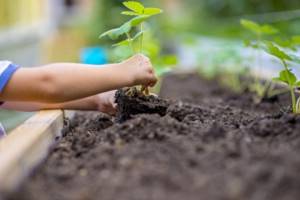
You should not plant on a hot sunny day, otherwise the seedlings may wither. Remove weeds from the ground in advance and apply fertilizers (70 g of superphosphate, 30 g of ammonium nitrate, 30 g of humus and 30 g of potassium salt per square area).
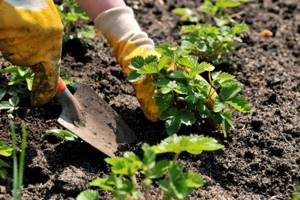
Control the location of the seedlings' roots in the soil. They should not wrinkle or bend. If the root system does not fit, make the hole larger. Water each planted bush thoroughly.
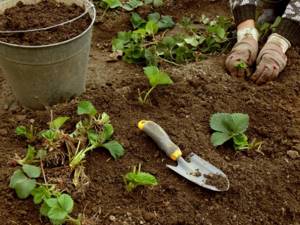
Unusual strawberry beds
Plastic bags as the most cost-effective planting method
Many gardeners have recently switched to bags. This is not without reason, since there are many advantages of such cultivation. Let's take a closer look.
- Minimal costs for pots. Everyone knows that a plastic flower pot is expensive, especially when it comes to the number of bushes you want to grow. It’s not even worth talking about ceramics or metal - the costs there are simply colossal and the payback will obviously not be earlier than in a year. A plastic bag costs about 10 rubles, and a used bag costs 5 rubles, and you can put not 1-3 sockets in it, but about 10-15 pieces.
- Ease of use. All you need is to fill the bag with useful black soil, add organic fertilizers and the job is done - you can start placing sockets.
- The ability to create vertical beds by tying bags to the ceiling or walls, which significantly saves space and labor costs for picking berries and caring for them.
There are practically no disadvantages, since overall you have space savings, weed control, retained moisture and increased cultivation comfort. The only thing that some gardeners don’t like is the untidy appearance of the plot, since the bags are not as aesthetically pleasing as pots, for example, or M-shaped beds.
Dutch technology - expensive but effective
Almost all European countries, where growing strawberries is much more profitable and profitable than in Russia, use more modern cultivation methods. Dutch technology has become the most familiar to everyone and 80% of all European agronomists prefer it. It's quite simple. Ceramic or plastic flower pots with a diameter of up to 45 centimeters are taken and installed on a frame pre-welded for them. They are placed in 10-12 rows, so the yield per square meter increases 10-12 times, depending on the density of the pots on the same level.
The most suitable method for those who do not have enough space to grow strawberries and need to grow them in cramped conditions. The only disadvantage of this method is the high cost of consumables and labor costs for constructing the frame. The first year is too early to talk about profit, so the cost of a “workplace” will cost you approximately 2.3-2.6 full-sized berries. That is, even when growing productive remontant varieties, profit can be seen in the second year and not earlier.
There are, of course, more advantages. Good ventilation of plants, optimal density, extremely comfortable bed and much more. This is an ideal option for anyone who wants to seriously engage in strawberry cultivation on their own plot and is aimed at long-term work with retail outlets and shops. The first 2 years you work for the harvest, and all subsequent years you reap the fruits of your activity and calculate your profits.
Vertical continuous beds
This is one of the little-known, uncommon methods of cultivating land in Russia. Such structures require a lot of labor to construct and are triangular welded metal plates, inside of which there are niches underground - these are where the sockets are placed.
Labor costs are high, but the ease of cultivation and space savings will more than compensate for this damage. This type of garden bed can be made not only from metal. Plastic, wood, OSB boards, and other materials are perfect for this. The platforms are placed at an angle of 70%, and their height reaches up to 160 centimeters (when manually processed without a stepladder) or up to 250-300 centimeters if the collection and care of bushes is provided using scaffolding and stepladders.
Main advantages: space saving, high planting density, high density of bushes per square meter, ease of care. The disadvantages include the length of time it takes to make places for planting strawberries, as well as the initial cost of the finished structure. The payback period is approximately one and a half years, which is relatively long for this type of business.
Growing and caring for strawberries +VIDEO
Fertilizer, fertilizing and watering strawberries
Strawberries do not like flooding of the root system, but at the same time they are a fairly moisture-loving crop. Even short-term severe drying out of the plantation soil leads to a decrease in both the quantity and size characteristics of the fruits. Drip irrigation gives the best effect on strawberry plantings. Moisture gradually permeates the root layer of the soil, without waterlogging it, and constantly maintains the soil in an ideal condition for growth and fruiting.
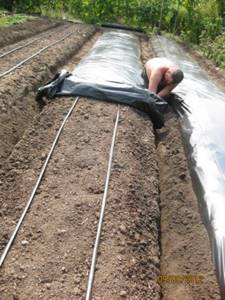
Drip irrigation tapes when mulching a strawberry bed with black plastic film
If it is not possible to install drip irrigation, watering is carried out superficially using a watering can or hose at the rate of 2-3 buckets per linear meter of row.
An excellent way to maintain soil moisture and reduce the frequency of watering is to mulch strawberry rows with covering materials, black film, straw, pine litter, etc. In addition to moisture retention, mulch completely suppresses the growth of weeds and, when decomposed in the soil, becomes an excellent organic fertilizer. The use of mulching reduces the need for watering by half. Watering is carried out as soon as the soil of the strawberry plantation dries to a depth of more than 5 cm.
Strawberries love nutrient-rich soil and are very responsive to the application of both organic and mineral fertilizers. Most often, gardeners fertilize strawberries three times a year:
- At the beginning of the growing season . In May, the first feeding of strawberries is carried out. During this period, there is intensive growth of young leaves and inflorescences; the bushes are in great need of nitrogen fertilizing. Nitrogen is the basis for increasing the green mass of plants, its abundance is the key to powerful growth and fruiting of the bush. For this feeding, you can use solutions of cow manure in a proportion (1:10), bird droppings (1:50), or nitrogen mineral fertilizers, for example, carbamide (urea) in an amount of 10 g. (half a matchbox) per sq. meter of mature fruit-bearing strawberry plantation. For young plantings, reduce the dose by half. On poor sandy soils, fertilizer doses can be increased by 50%.
- In the middle of the growing season. During flowering and fruiting, strawberries need all the basic nutrients - nitrogen, phosphorus and potassium. We will find all these elements in complex mineral fertilizers containing N:P:K in an amount of 10-20 g. per sq. meter of strawberry planting. For young plantings, reduce the dose by half. On poor sandy soils, fertilizer doses can be increased by 50%.
- At the end of the growing season. In September, the third feeding is done. During this period, the laying of fruit buds with the next year's harvest begins and the beginning of preparation for winter in summer (regular) fruiting varieties and the harvesting period in remontant varieties. The need for nitrogen drops sharply, while the need for potassium and phosphorus, on the contrary, increases. Fertilization is carried out with a phosphorus-potassium mixture P:K, for example, superphosphate and potassium chloride in an amount of 15-20 g. mixtures per sq. meter. For young plantings, reduce the dose by half. On poor sandy soils, fertilizer doses can be increased by 50%. Application of nitrogen fertilizers during this period is not advisable.
- In addition to these fertilizers, it is very advisable to add organic matter in the form of humus or rotted manure to the soil of strawberry plantings in late autumn or early spring, 1-2 buckets per 4-5 square meters. meters.
In addition to watering and fertilizing, the following work is carried out on the strawberry plantation:
- If you do not use mulching (which is very unnecessary), it is necessary to carry out weeding, superficial loosening of the soil and slight hilling of the bushes.
- After harvesting, it is necessary to remove all old, damaged leaves and those showing signs of fungal disease. Only young and healthy leaves are left. These leaves, unlike the old dark green ones, have a bright light green color and are relatively small in size.
- On bushes that are not involved in the process of propagation and production of seedlings, it is necessary to remove any tendrils that appear throughout the season. This will allow you not to waste the nutritional elements of the bush in vain and concentrate your energy on fruiting, laying next year’s crop and your own growth.
- In late autumn, it is recommended to trim at least old, diseased and dead leaves, and at most the entire leaf mass, without damaging the heart of the bush.
- In regions with harsh winters, it would be a good idea to cover the strawberries for the winter with covering material (for example, several layers of spunbond) or spruce branches.
And finally, to consolidate the information received, watch this short video:
Mulched and covering plantations
These planting methods should be placed in a separate group, since they represent a completely different type of cultivation and care. Today, they practice covering strawberries with film, covering them with mulch (pine needles, sawdust) or growing berries on spandex (agrofibre). There are plenty of advantages: moisture is retained for several months under mulch or film, there are no weeds at all, the berries are always clean and do not get dirty in the soil or substrate.
Unfortunately, there are also disadvantages. Strawberry tendrils cannot take root, so they are not suitable for those who are engaged in its cultivation. The roots of the plant do not breathe, so specific fungal diseases can develop; it is not recommended to keep the berries under covering material for a long time. But, in any case, such methods are most suitable for summer residents who grow berries for themselves and do not count on long-term commercial activity.
There are indeed many ways to grow strawberries, and the choice will depend not only on your financial capabilities, but also on the free time that you can spend on cultivating the plot. Choose the method that suits you and get large harvests of berries before the frost!
When to plant strawberries in open ground?
For strawberries, the optimal air temperature is 15-25°C. Accordingly, strawberries should be planted:
- in the regions of the middle zone - in early spring (second half of March - mid-April), but better in the fall (during August and September);
- in the southern regions - in autumn (early September);
- in the northern regions - from the second half of May to the end of June.
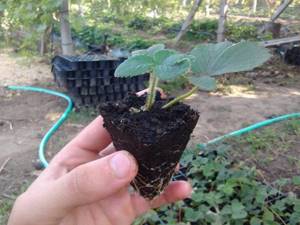
Before growing strawberries, you should decide on the method of cultivation and properly prepare the place for this crop.
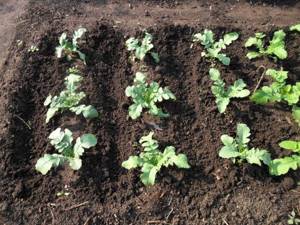
Disease Prevention
There are several ways to maximally protect your strawberries from the development of diseases and the spread of pests. First of all, the choice of site plays a big role:
- It is advisable to plant strawberries not in the same place, but to radically change the location of the plantation every 3-4 seasons.
- Strawberries share common pests with some crops. For example, the same diseases and pests are characteristic of raspberries, blackberries, and currants. Accordingly, strawberries should be planted away from these garden crops.
In addition, strawberries need to be closely monitored. For example, it is easier for diseases and pests to multiply and hide in dense areas where there is a lot of dampness. It is also advisable to give preference to varieties with stable immunity if the climate or soil is not very conducive to growing strawberries.
In particular, preventive treatment of the area in early spring should be taken into practice. You can use hot water (+60С, but strictly ±2-3С), and also give preference to chemicals, but only before flowering.
Stage three. Seed preparation
7 days before the intended sowing, carry out disinfection in a solution of potassium permanganate, placing gauze knots containing the seeds there for about 6-12 hours. Next, place the seeds in a growth stimulant solution (such as Kornevin or Novosil) for at least another 3 hours.
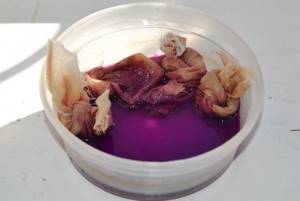
Treatment of seeds before sowing with potassium permanganate
After this, squeeze out the seeds and send them for hardening. For this purpose, take a bandage, fold it in 2 layers, moisten it, spread the seed on it, and then roll it into a “sausage”. Place the latter in a vertical position in a container and put it in the refrigerator overnight. During the day, keep the workpiece at room temperature. All this should last 3 days (no more, otherwise the seeds may die).
Note! Instead of hardening the seeds, you can immediately stratify them.
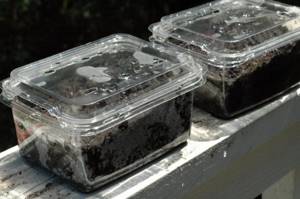
Mini-greenhouse for seed germination
Stratification procedure
The seeds of all plants that need a period of “rest” need stratification. The duration of the procedure depends on what the requirements of a particular crop are.
Note! Stratification refers to a period of “artificial winter”, during which the seeds have to go through several stages of development. As a result, their period of rest is noticeably reduced, and the rate of ascent increases several times.
For example, strawberries usually take 35-40 days to germinate, while after stratification, the first shoots can appear within 5 days, and mass shoots after 2 weeks.

Strawberry shoots
It is more convenient to carry out stratification after sowing. To do this, take containers with seed material and place them in the refrigerator (preferably on the bottom shelf), where they are kept at a temperature of 2-4 ° C during the entire stratification period. Open the containers from time to time to moisten and ventilate. The substrate should not dry out.
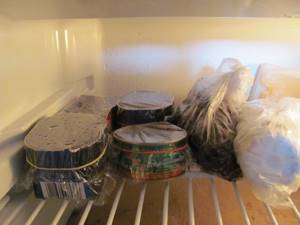
Seed stratification

Stratification of seeds in snow
You can also carry out stratification long before sowing. To do this, around November or January (should be counted from the time of sowing), place the seeds on moistened cotton swabs (round), cover the top with the same ones and place them on the bottom shelf of the refrigerator (the temperature should already be within 4-5°C). Moisten your tampons from time to time. When stratification is complete, dry the seeds and sow into prepared containers.
